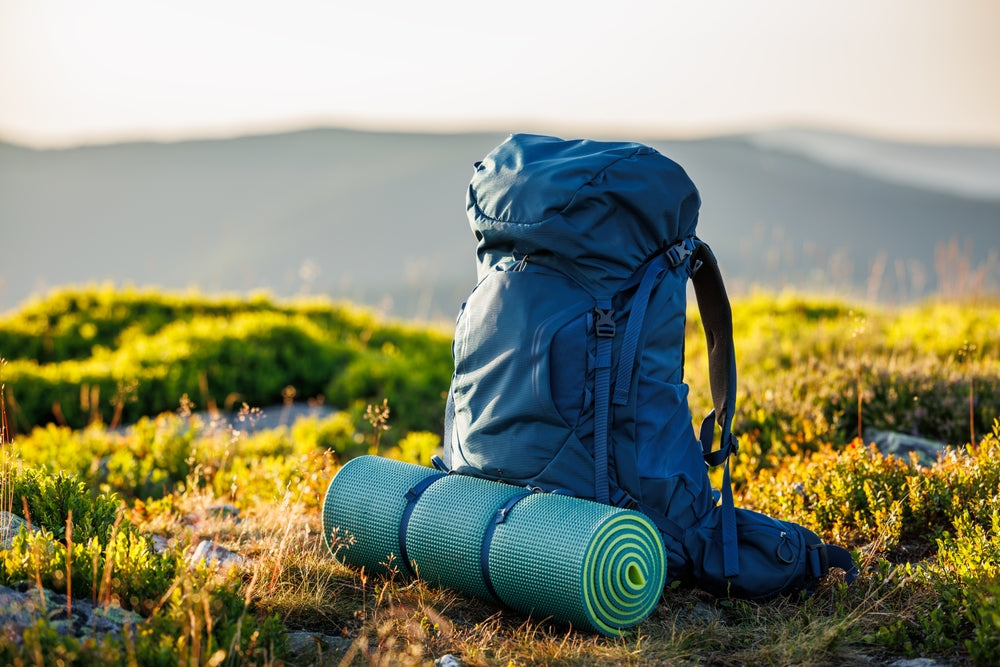Free U.S. Shipping On Orders Over $150

The Ultimate Clothes Packing Guide for a Backpacking Trip
Posted on
The extreme minimalism required when backpacking can make packing clothes a challenge. You need to pack light while also ensuring you have everything you need, including clothes for a wide range of weather conditions.
So you have to be efficient with your clothes. Pack items you can wear multiple times, clothes you can mix and match and versatile wear that can be used for different purposes. Here’s a quick beginner-friendly guide on which clothes to pack when going backpacking.
To make it easy to understand, we’ll go in layers starting from underwear, then the mid layers and then the outer layers. Backpacking clothing is all about layering.
Socks and Underwear
Let’s start with the inner layers. The golden rule, and we’ll say this about every other piece of backpacking clothing, is to avoid cotton.
Cotton gets damp and stays damp. Wool undies provide the best comfort for backpacking. They absorb sweat, dry quickly, they keep you cool and can also keep you warm. Nylon and polyester are also good materials for backpacking underwear, though they tend to smell more because of the synthetic fabrics.
If you can, get underwear that’s designed specifically for sports and outdoor adventures. This type of underwear is typically more breathable, moisture-wicking and comfortable.
The Kribi sport underwear from Hercleon is a great example. In addition to being really comfortable (that you forget you have it on), it also fights odor-causing bacteria, so you feel fresh for longer.
As for socks, merino wool is the best material. It reduces dampness, prevents overheating, keeps your feet warm when it’s cold and reduces odors.
For the ladies, don’t forget to pack a breathable sports bra (without metal clasps).
When hiking in cold weather, you may also need a tank top or long underwear for extra warmth.
Base Layers
Next are the base layers — your shirt, tops and pants. As with any other backpacking item, stay far away from cotton. It can actually be dangerous when it gets cold since it stays damp and increases risk of hypothermia. Go with merino wool if you prefer natural or polyester and nylon if you want synthetics.
We recommend buying hiking pants and tops, rather than wearing your yoga pants or sweatpants. Hiking wear is not only more comfortable for hours of walking, it’s also more durable. The last thing you want is your pants ripping in the middle of your backpacking trip.
We recommend packing at least a couple of t-shirts (you can hike in one and sleep in the other one as the hiking one dries overnight) plus a long-sleeved t-shirt with UPF protection (great if the weather is sunny).
The Hercleon short-sleeved or long-sleeved shirts are great for backpacking. They are highly breathable and actively kill any odors, meaning you can wear the same shirt multiple times without having to wash it.
Mid Layers
Your mid layers are your best protection against the cold. Even if you are going on a summer backpacking trip, you should still pack a couple of warm mid-layers.
The most popular choice is a lightweight fleece jacket, though a wool sweater could be enough if the weather is warm. For colder weather, use a thicker insulated fleece jacket as your mid-layer. Also pack a thicker puffy jacket just in case it gets colder or windy.
For your legs, you can pack a warmer pair of hiking pants (they are typically lined with fleece) and change into them when it gets cold.
Outer Layers
The outer layers are all about wind and rain protection. Here’s where you need a waterproof rain jacket as well as rain pants. Wear these on top of your hiking clothes when it begins to pour. Make sure they are breathable to prevent moisture from getting trapped underneath.
Sleepwear and Loungewear
An extra t-shirt and a pair of sweats or yoga pants are perfect for sleeping in or just lounging around the campsite. Have an extra pair of clean socks too.
How warm your sleepwear is depends on the expected weather. If it will be cold, consider layering the t-shirt with a woolen sweater and packing thicker socks.
Accessories
- A pair of gloves if you expect it to be cold.
- A hat for cold protection and a baseball cap or wide brimmed hat for sun protection.
- A pair of sandals for wearing at the campsite.
- A scarf for extra warmth.
- A bandana or gaiter to protect your neck from the sun. You can also wear it around your forehead to keep hair and sweat out of your eyes.
Quick links
Contact
6063 Hudson Road #160
Woodbury, MN 55125
Yo@hercLeon.com
Leave a comment: